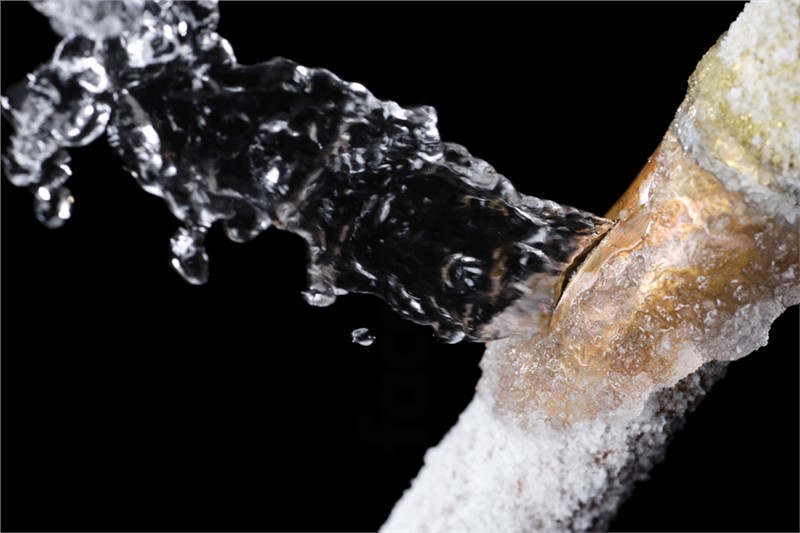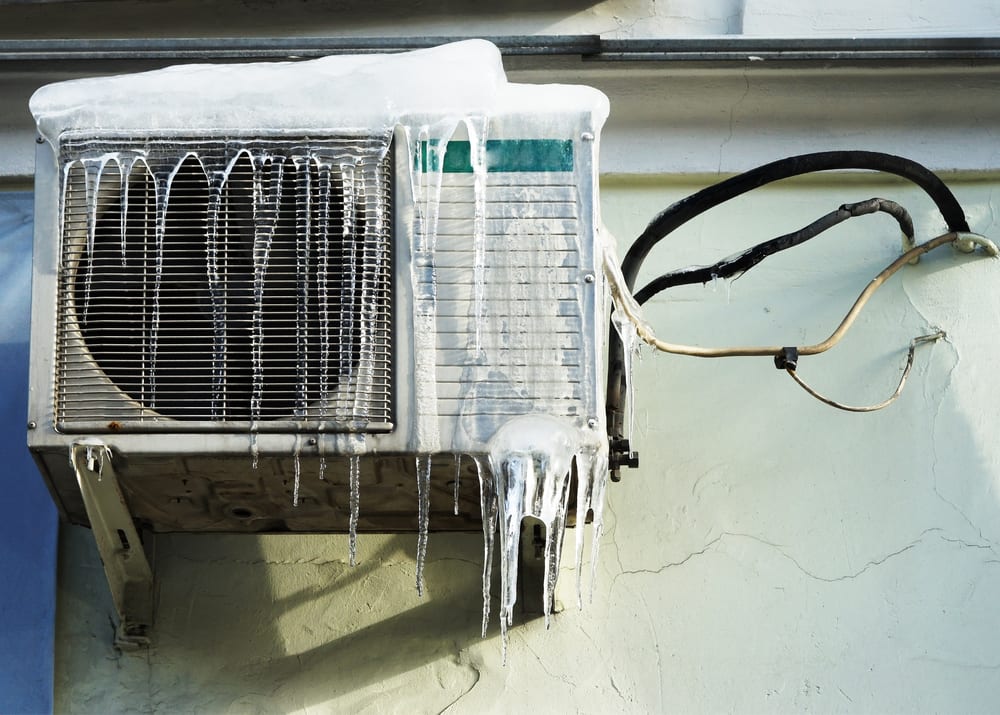How to Handle a Frozen AC Pipe: Step-by-Step Handbook
How to Handle a Frozen AC Pipe: Step-by-Step Handbook
Blog Article
Are you trying to find ideas around Why Is Ice On My Outside Air Conditione?

Introduction
Discovering that your a/c pipeline is frozen can be worrying, especially throughout hot summertime when you count on your ac unit one of the most. Recognizing what to do in such a circumstance is critical to avoid additional damage to your cooling system and guarantee your comfort indoors.
Understanding the Causes
A number of variables can contribute to the freezing of an air conditioning pipe. Understanding these reasons can assist you resolve the problem successfully.
Lack of Airflow
One common root cause of an icy a/c pipe is inadequate air movement. When the air flow over the evaporator coil is restricted, it can create the coil to drop below freezing temperature level, resulting in ice formation on the pipe.
Reduced Refrigerant Levels
Insufficient cooling agent levels in your a/c system can also result in an icy pipeline. Reduced refrigerant degrees can cause the stress in the system to drop, bring about the freezing of dampness on the evaporator coil.
Winter Conditions
In colder climates, freezing temperature levels outside can contribute to the freezing of air conditioning pipes. If your air conditioning system is not properly protected or if there are leakages in the ductwork, cold air can infiltrate the system, creating the pipe to freeze.
Dirty Air Filters
Dirty or stopped up air filters can limit air movement in your a/c system, resulting in various problems, consisting of a frozen pipeline. It's necessary to change or cleanse your air filterings system consistently to guarantee correct airflow and stop ice build-up.
Signs of a Frozen Air Conditioner Pipe
Recognizing the signs of an icy a/c pipeline is important for punctual action.
Lowered Airflow
If you observe a significant decline in airflow from your vents, it could show an icy pipe.
Ice Buildup on the Pipe
Noticeable ice accumulation on the refrigerant line or the evaporator coil is a clear sign of an icy AC pipeline.
Odd Sounds from the Unit
Unusual noises, such as hissing or bubbling, coming from your a/c device can signify that there's ice existing on the pipeline.
Immediate Actions to Take
When confronted with an icy AC pipeline, it's vital to act rapidly to prevent more damages to your air conditioning system.
Shutting off the air conditioning
The very first step is to switch off your ac system to avoid the system from running and intensifying the issue.
Looking for Blockages
Check the location around the interior device for any kind of obstructions that might be obstructing air flow, such as furnishings or drapes.
Defrosting the Pipe
You can make use of mild approaches like placing towels taken in cozy water around the frozen pipeline to assist thaw it gradually.
Safety nets
Taking safety nets can assist avoid future occurrences of an icy air conditioning pipe.
When DIY Methods Fail
If your attempts to thaw the pipeline or address other concerns are not successful, it's time to employ an expert.
Relevance of Hiring a Professional HVAC Technician
A qualified HVAC specialist has the experience and tools needed to diagnose and repair concerns with your air conditioning system safely and effectively.
Normal Maintenance Checks
Schedule regular maintenance contact an expert HVAC professional to make sure that your air conditioning system is running successfully.
Changing Air Filters
Consistently change or cleanse your air filters to prevent air movement limitations and keep ideal performance.
Shielding Exposed Pipes
If your air conditioner pipelines are exposed to chilly temperatures, consider insulating them to prevent freezing during winter months.
Looking For Professional Help
If DIY approaches stop working to fix the problem or if you're not sure regarding exactly how to proceed, it's finest to look for assistance from a qualified HVAC specialist.
Conclusion
Handling an icy air conditioning pipeline can be a frustrating experience, but understanding just how to react can help reduce damages and bring back comfort to your home. By recognizing the reasons, identifying the signs, and taking punctual activity, you can efficiently attend to the concern and prevent future events.
G UP? HOW TO FIX IT?
It happens all over America. And the rest of the world probably. It’s the hottest day ever and for some darn reason your AC isn’t cooling the house. You fiddle with the thermostat to try and fix the problem. Nada. All you can do now is go outside and check the AC unit. You make your way there and find your air conditioner unit is frozen! But how?
In this post we’ll cover how you can tell that your air conditioner has frozen (other than the obvious reasons), what could have caused the freeze, and some of the things you can do about your AC freezing up. And if you have a frozen heat pump condenser, read our blog about it to learn what to do! But remember, it is always best to avoid your AC freezing up with an AC tune up. And if you are moving into a home, it's critical to get HVAC inspection so that you are aware of an AC problems before you move in.
Keep reading and you may be able to fix the frozen AC yourself. If you can’t, call an HVAC specialist. If you live in Maryland, call SuperTech HVAC for AC repair. We’ll take care of it.
How Does An Air Conditioning Unit Work?
How you probably imagine an AC works is wrong. Contrary to popular belief, an AC system does not inject cool air into a building. Instead, it removes the heat from inside and transfers it outside. Cool huh? (Pun intended).There are 4 major components among the 3 stations of an air conditioning system: the evaporator coil, the compressor, the condenser, and the refrigerant – a special chemical that links everything together through a closed loop system.
Station 1:
Warm indoor air is sucked into the return vent, through a filter, and blows over the evaporator coil. The heat is absorbed into the cold refrigerant, turning it from liquid to gas. The air, which is now cool, is blown back into the home to areas that your thermostat, i.e. you, has decided.
Station 2:
The refrigerant makes its way outside the house to the compressor, which squeezes the warm refrigerant, raising its gaseous temperature even more.
Station 3:
When the super hot vapor refrigerant reaches the condenser, the last step, the heat is expelled and absorbed into the outdoor air. The refrigerant instantly cools, which changes it from gas back to liquid form. The cold liquid refrigerant is now ready to return to station 1 and repeat the process.
Is Your AC Freezing Up? Here Are The Signs:
As you may have guessed, your air conditioner unit freezing up on a hot day is not normal.
If this happens, there's no need to panic. Often the issue can be solved with a little troubleshooting. If the AC unit is left frozen for too long however, you may find yourself with a bigger problem.
First things first, how do you know your AC is frozen?
Well, the obvious sign is the ice on your refrigerant line-set pipe. Simply check between your outdoor AC unit and your home's exterior wall to see whether your AC line frozen.
You might also have a frozen evaporator coil. This one's not as easy to check. You'll need to open a panel on the indoor unit to inspect. Don't do this unless you're handy. If you aren't, call an HVAC pro like SuperTech HVAC or you may damage something in the process.

As an enthusiastic person who reads about Air Conditioner Frozen? How To Fix your Frozen AC Line, I assumed sharing that piece was sensible. You should take the time to promote this post if you liked it. Thank you so much for going through it.
Schedule Service Report this page